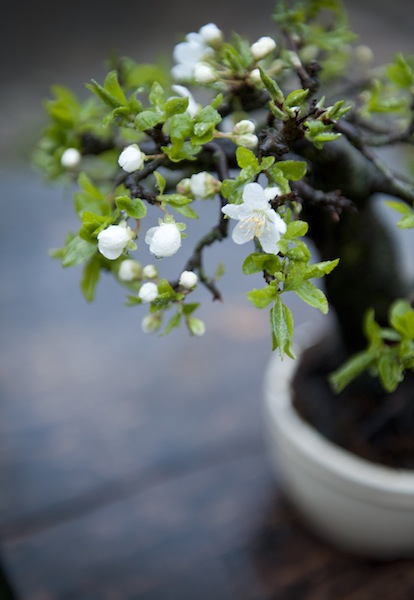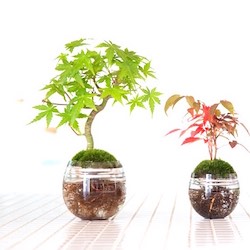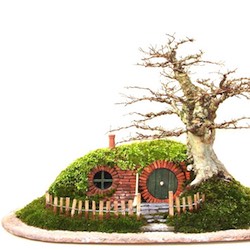I am asked many times how to make decent photographs of Bonsai.
Many find themselves having trouble with disturbing backgrounds and therefore pictures failing to show the beauty of the trees properly. Therefore I will try to explain what to avoid and what to seek for, shooting Bonsai with a camera. What is necessary to understand is that it is not the equipment alone which makes a good photo or photographer, although it is helpful achieving higher results. But the basics to understand are how to make good pictures. With a cheap camera or with an expensive one. Good photographers are able to make very descent photos even with a cell phone.
Light
A picture is made of light, and illuminated parts reflecting the light thrown at it from the sun or other light sources are what is shown at the picture, the rest remains black. So light is everything for a picture. Photos shot in the shadow, on a cloudy day, in the sun or in evening illuminated with spotlights will each appear totally different with the same motive and framing. Different light makes different scenes and moods, which will influence on the experience the viewer gets from the photo.

Little depth of field, a background blurred and without disturbing lines.
The focus is on showing the flowers, not the full tree. Cloudy and rainy day adding a soft light to the picture.
Distance from motive 2' (50cm).
70mm, f 2,8, shutter 80, ISO 640.
Bonsai photography; separating items from the background
So you need to observe how the light appears at first. Next, choose a good calm background, especially if your camera can not blur this, which is the case using a cell phone or some instant simple cameras. The backgrounds have to be without disturbing lines like branches from other trees i.e. when possible. A clean wall (not a brick wall that have many lines and fields disturbing e.g.), having colors separating from the item in focus, will make a descent simple and pleasing photo, even using a simple camera.
If you have a camera that is able to adjust aperture (f-stop), which is how much light is allowed to pass through the lens, you have further opportunities. Using a high aperture means that much light is allowed passing through, and this decrease the depth of focus. A fully open (f-stop 2,8 or 4 depending on lens type) gives only a little depth of field, blurring what’s not precisely in focus, helping separate the object from the maybe disturbing for- and background.

Macro photo of new buds on a Japanese maple bonsai.
Using a macro lens having very little depth of field naturally, excludes the background, but still this is visible showing more than what’s in focus. Using a larger depth of field at the same picture would make a mess, not making the viewer able to see what is the story of the picture, the new buds.
Semi cloudy day with good light.
Distance from lens to branch is 1' (30cm).
60mm, f 3,5 and shutter 320. ISO 400.
Using a telephoto lens (zooming in on zoom lenses), enhances this blurring effect dramatically depending on lens type and the telephoto lens effectiveness. In combination with a high aperture (f stop 2,8 or 4 if possible), a high telephoto lens distance will increase the defocusing of the background.
Put simple, the further away you can stand from the item photographed, and still having the object filling your picture, the more you can blur the background. Standing closer, means a wider (wide-angle) picture, increasing the depth of field, and more disturbing items is seen in the picture.

A Juniper bonsai tree at Toju-en, Omiya in Japan.
Being in the shadow on a sunny day, gives a soft light with character.
The tree is placed with a background full of lines blurred by a high. The darker background colors further separates the tree from the background bringing it out clean and simple.
Standing 1,5 meters away.
58 mm, f 2,8 and shutter time 400. ISO 200.
All about seeing
The above are guidelines helping with the technical part. But this is the one part of photographing. Equally or even more important in Bonsai photography is framing. The framing of the picture, is where you select what to see and what to exclude. As it is the case of choosing backgrounds, framing also decides the balance in the picture and the angle the item is viewed from.
By taking a lot of pictures, you will learn how to select the best framing of your pictures, always having in mind what you do not want to see. Especially when watching a Bonsai we want to exclude most other items around as a basic. This means you have to use your feet’s moving around to get the right position, and bend or stand on a box if necessary, to elevate the camera to the right position, including what you want to capture and excluding unwanted and disturbing items.

In opposition to the other pictures, an example of a wide angle photo were lots of details and sharpness from front to back is wanted. Here a small f9 stop is used to add sharpness to the whole picture, helped by the use of a wide angle photo lens (zoom out on the camera). A sunny day with big contrasts.
24mm, f 9, shutter speed 200 at ISO 200.
f-stop versus shutter speed
The f-stop that decides the amount of light let through the lens (f 2,8 means less depth of field, and f 22 a large depth of field) is what’s important for blurring for- and backgrounds. Choosing the right setting on cameras where this is possible is important. The shutter speed will automatically adjust if you use the A setting on the camera if available. Shutter speeds decide how long time the lens is open letting light in for correct exposure in combination with the aperture.
If you use the full auto (P) selection you are not able to select and control the depth of field, and blurring the background as you wish. Therefore I always use the A setting, concerning on depth of field alone. As long as the shutter speed is high enough to avoid shaken blurry pictures it is fine.

My favorite Bonsai artist Tomio Yamada at Seikou-en, Japan.
The darker background separates the objects from any distracting lines or unwanted objects. On a sunny day like this even more effective, having the building behind in shadow.
70mm, f 2,8 at shutter speed 2500, ISO 200.

Here the Bonsai is lifted from the table to make a descent photo, removing a disturbing background as would be the case if the Bonsai were still placed among hundreds of other bonsai.
I hold it with my left hand and my arm stretched out for distance, photographing with the other at a distance between lens and Bonsai at 2' (65cm).
70 mm, f 2,8 and shutter at 500, ISO 100.
Training
Take a lot of pictures, and select the ones that work. Delete the rest, because this is how also professionals do. Shooting a bunch of pictures, also of the same item, only selecting the ones that turn out good afterwards. Because also experienced photographers are sometimes disappointed of how pictures turned out, and surprised of pictures turning out good against expectations when they are loaded into the computer.
Every time a new learning experience is made, the quality and success moves upwards. So train and experience with your camera, and remember simpler is often better. Meaning you need to train your eyes for a clean and simple picture, just focusing of what you want to see, excluding the rest.
Some adjustments can be made afterwards in the computer with Photoshop e.g., but only good pictures can be enhanced further. Bad raw material with poor framing e.g. doesn’t turn into good photos with post work in the laptop. Doing proper field work is most important to successful photos, and needs little aftercare.
My equipment
I use this for my photo shooting: A Nikon D700, with a macro lens for extreme close ups. A zoom lens Nikon 24-70 mm f 2,8 for all round photography usable for reportage, people and wide angle photos of landscapes e.g.. And finally a Nikon 70-300 mm f 4,5-5 that I have found very useful for Bonsai photos making me able to blur backgrounds, but also fine for portraits i.e.
This is of course more advanced, and simpler cameras will do equally good photos, if just care is taking selecting the right backgrounds and being aware of selecting the right position shooting the photos.

My gear. Nikon D700, here mounted with a macro lens.
Shot with cell phone ☺

Pine at Yorozu-en. Here the green foliage colors help separating the tree from city houses in the back, also further helped by smaller depth of field, softening disturbing lines.
55 mm, f 2,8 at shutter 1600, ISO 100.
Written by: Morten Albek. "I have traveled to Japan to study the art of Bonsai by having talks with some of the greatest masters, seeing numbers of Bonsai in Japan, and getting inspired by the Japanese aesthetics. Therefore I also joined the Nippon Bonsai Sakka Kyookai Europe recently, to develop my skills in that direction." Please visit his site shohin-europe.com for more information, or check his Bonsai artist profile; Morten Albek.




